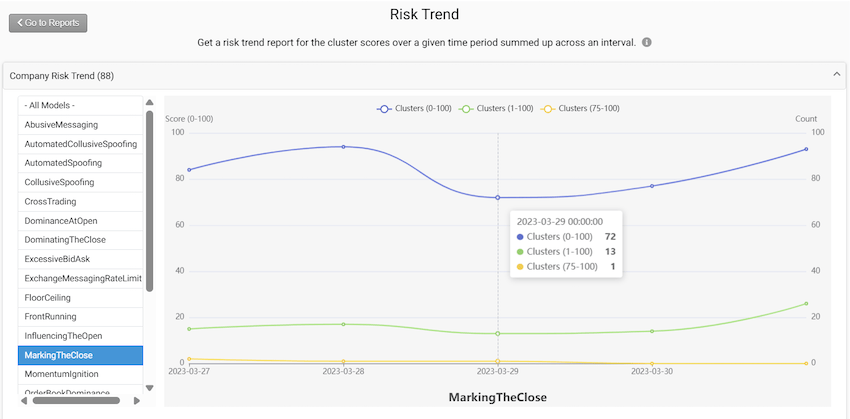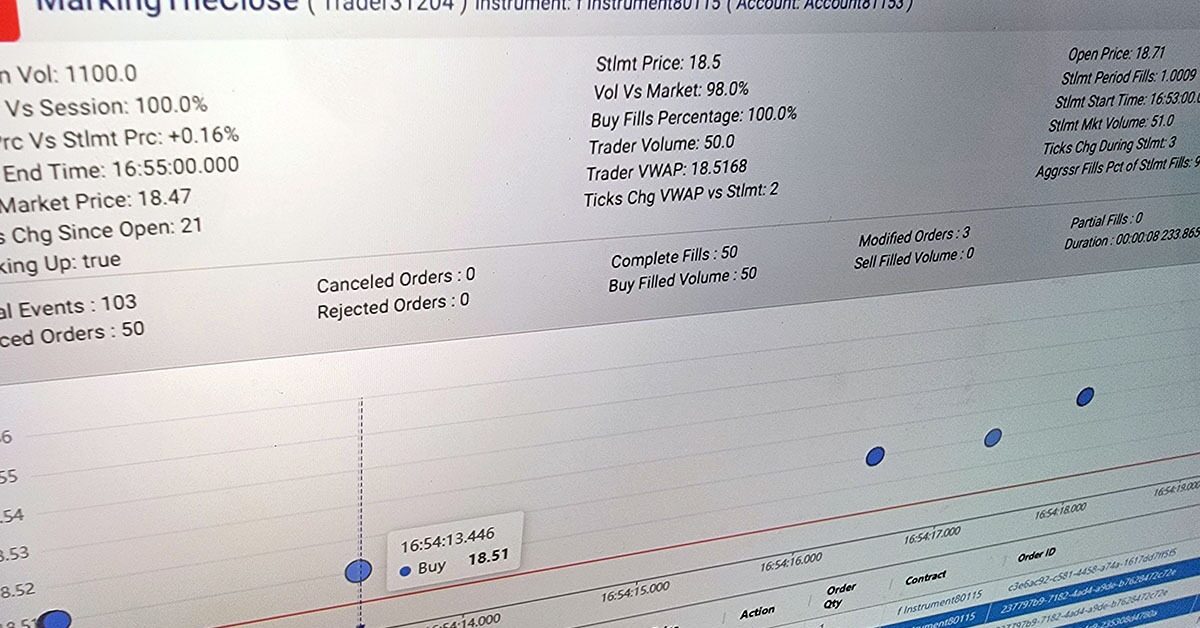For years, spoofing has dominated headlines as the quintessential market manipulation tactic. But recent, high-profile regulatory actions from two major global watchdogs, the Australian Securities and Investments Commission (ASIC) and the Securities and Exchange Board of India (SEBI), signal a powerful shift. The focus is expanding, and an old form of manipulation is making a dramatic comeback: marking the close.
These cases serve as a powerful wake-up call to market participants, proving that relying on outdated or deficient systems is no longer a viable strategy. They underscore a new era of regulatory scrutiny where robust, intelligent surveillance isn’t just a cost center—it’s a critical component of risk management and business continuity.
What Is Marking the Close?
Marking the close is a form of market manipulation where a trader or a group of traders attempts to influence the closing price of a security or financial instrument by aggressively executing buy or sell orders at or near the very end of the trading session.
The practice is considered illegal and unethical because it creates an artificial price for a brief period, which can mislead other market participants and compromise market integrity.
How It Works:
Identification: A manipulator identifies a security where they hold a significant position or have an interest in its final price. This is often a thinly traded security where it’s easier to move the price with less volume.
Execution: Just before the market closes (in the final minutes or even seconds), the trader places a series of large, aggressive orders—either to buy (if they want to push the price up) or sell (if they want to push the price down).
Outcome: The surge in late-day volume can overwhelm the natural supply and demand in the market, causing the price to move in the manipulator’s desired direction. The final trade of the day at this manipulated price becomes the official closing price.
Motivations for Marking the Close:
Traders engage in this practice for a number of reasons:
- Portfolio Valuation: To inflate the value of a portfolio or a fund’s holdings for reporting purposes, e.g., at the end of a quarter or year. This is also known as “window dressing.”
- Performance Metrics: To meet performance benchmarks tied to bonuses or other financial incentives.
- Derivative Settlement: To favorably influence the settlement price of a futures contract, options, or other derivative that is linked to the security’s closing price.
- Avoiding Margin Calls: By propping up the price of a security, a trader can avoid a margin call on a leveraged position.
What Happened in the ASIC and SEBI Regulatory Actions?
The consequences of failing to detect this activity are clear.
In the first of two separate regulatory actions by ASIC, the regulator alleged that on 50 separate occasions between January and September 2022, Firm A allowed three of its clients to place suspicious orders in the final minute of trading. This is a form of marking the close where the orders were designed to impact the daily settlement price in a direction favorable to the clients’ existing positions.
ASIC’s Market Disciplinary Panel (MDP) imposed a record A$4.995 million fine on Firm A. This is the largest penalty ever levied by the MDP.
A key finding was that Firm A’s primary trade surveillance tool, Nasdaq SMARTS, had a coding error. The MDP found that Firm A was repeatedly put on notice by ASIC about suspicious client activity and market volatility but failed to take timely action to address the conduct or fix the deficiency in its surveillance system.
In the second ASIC action, Firm B was fined A$3.88 million by the MDP. ASIC found that between May 2023 and February 2024, the company allowed two clients to place 33 suspicious orders in the final two minutes of trading in the electricity and wheat futures markets.
And finally, in the SEBI Action, the regulator alleged that Firm C engaged in a form of marking the close by influencing the underlying cash and futures markets, e.g., in Bank Nifty, to benefit its large positions in index options, particularly on expiry days.
SEBI ordered the impounding of approximately ₹4,844 crore—about $580 million—in what it deemed to be “unlawful gains” from the alleged manipulation. SEBI also initially banned Firm C and its affiliates from the Indian securities markets. The ban was later lifted after the firm deposited the impounded funds into an escrow account. The case has sparked a wider debate in India about the regulatory oversight of foreign institutional investors (FIIs) and high-frequency trading (HFT) strategies in the country’s highly active derivatives market.
What Tools Does TT Trade Surveillance Provide to Detect Marking the Close?
TT Trade Surveillance provides a multi-layered defense against this specific form of manipulation with three specialized models:
Marking the Close: Our sophisticated, out-of-the-box model uses a set of parameters to identify the core pattern and then creates a risk score from 0-100. Alerts that receive a score of 75 and higher should be given the highest priority by the compliance users. The risk score is determined by a combination of factors, such as a trader’s volume vs. the market and aggressive trading during the settlement period, ensuring users can prioritize high-risk alerts and are not inundated with false positives.
Dominating the Close: This model provides a crucial “belt and suspenders” approach. It monitors the final two minutes of trading regardless of the market, ensuring that even if one model has a configuration issue—like the one that cost Firm A millions—a second layer of defense will still effectively identify the activity.
Marking the Close (Configurable Model): For clients with unique needs, this model provides complete flexibility. Users can fine-tune parameters and apply specific filters to align with their unique risk profiles for different markets and products.
In addition to these models, TT Trade Surveillance offers robust tools for identifying patterns of suspicious behavior over time. The Risk Trend Report allows users to see if a trader consistently generates high-scoring alerts from the three marking the close models at the end of each month or quarter, providing a powerful indicator of a pattern of long-term manipulative activity.

The ASIC and SEBI cases prove that investing in proactive, intelligent and well-maintained surveillance solutions is no longer just a regulatory requirement—it’s a fundamental necessity for protecting your business and preserving market integrity.
If you would like to schedule a demo of our multi-asset trade surveillance software and compliance and risk management solutions, contact us via the online inquiry form.
